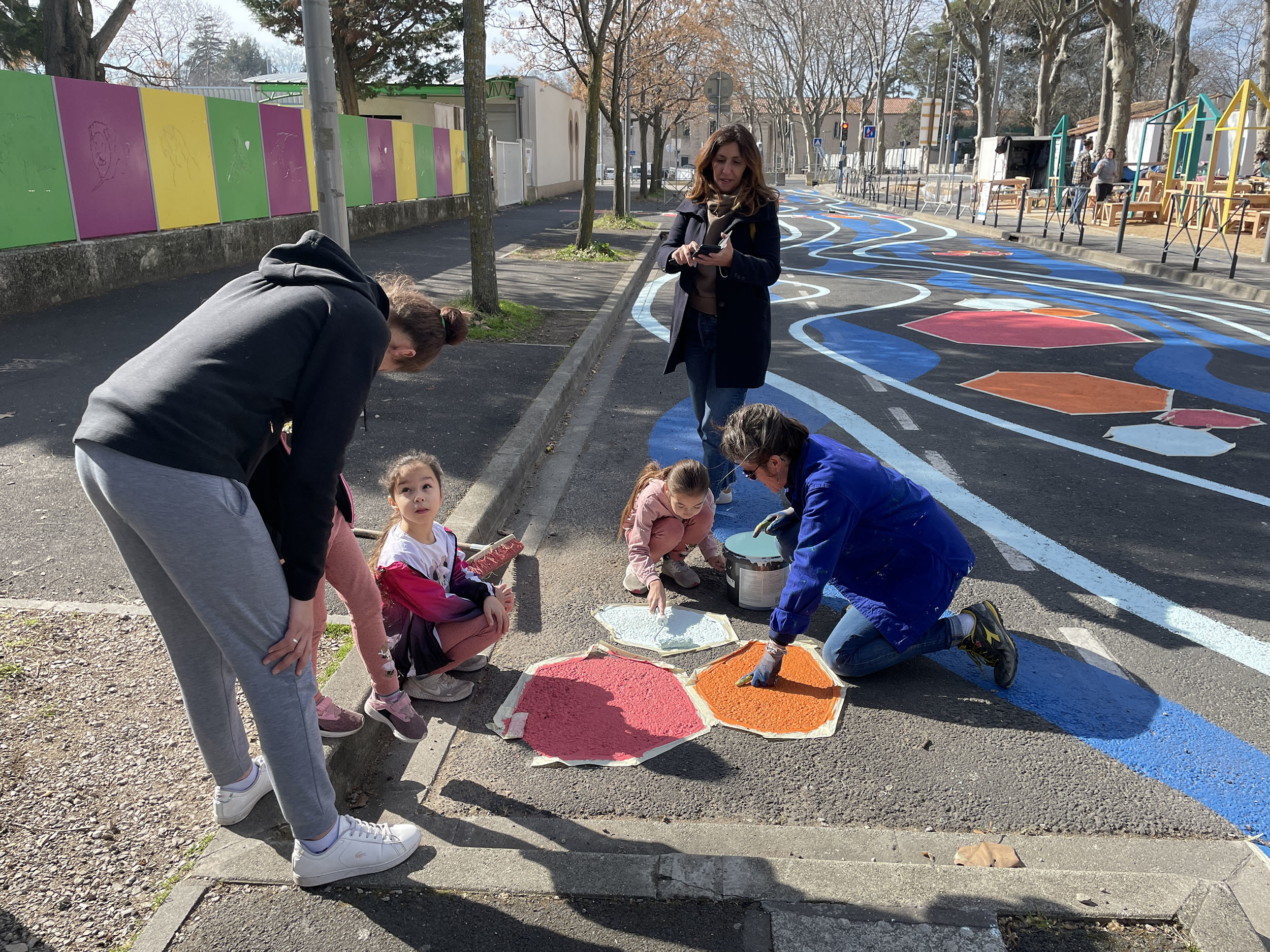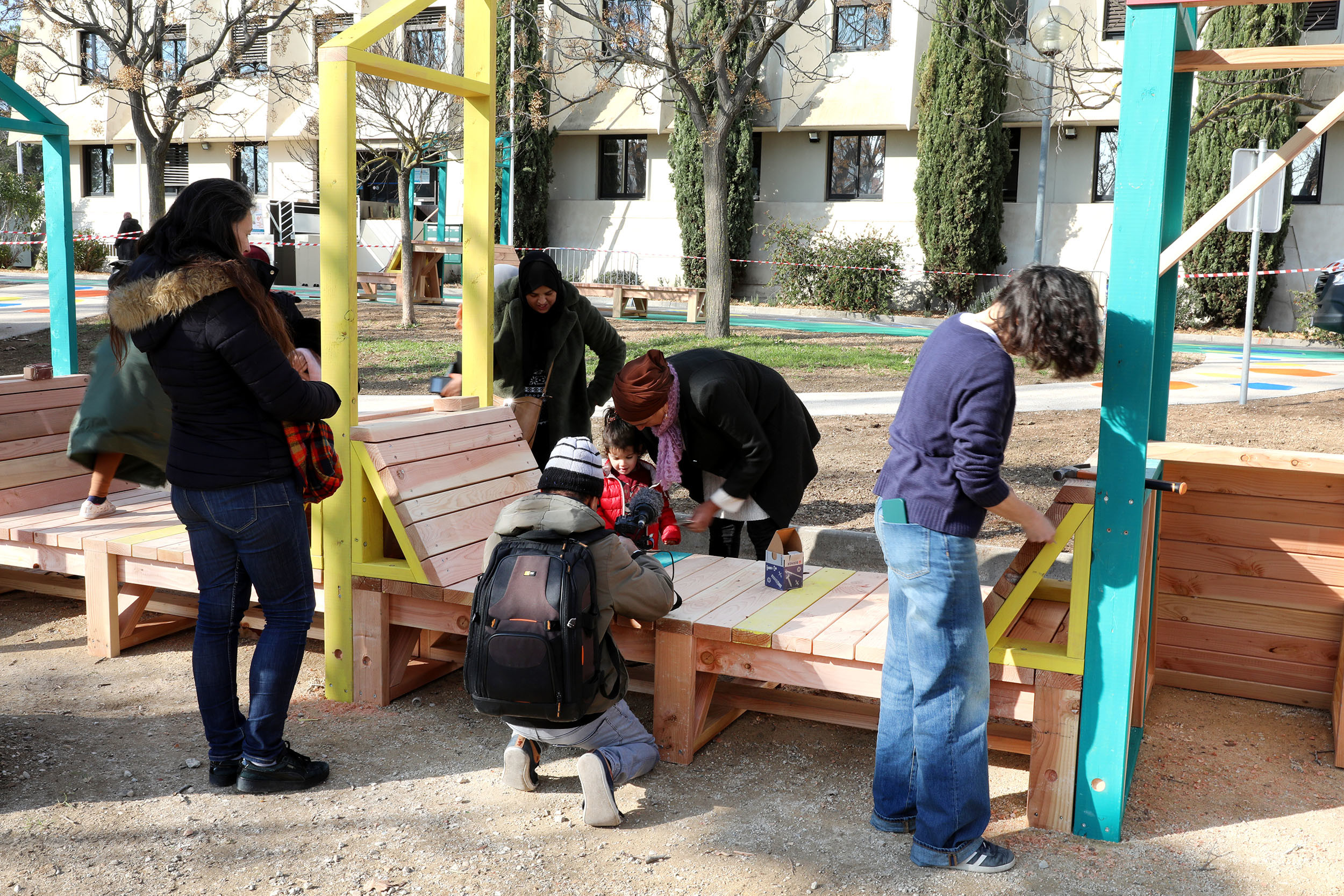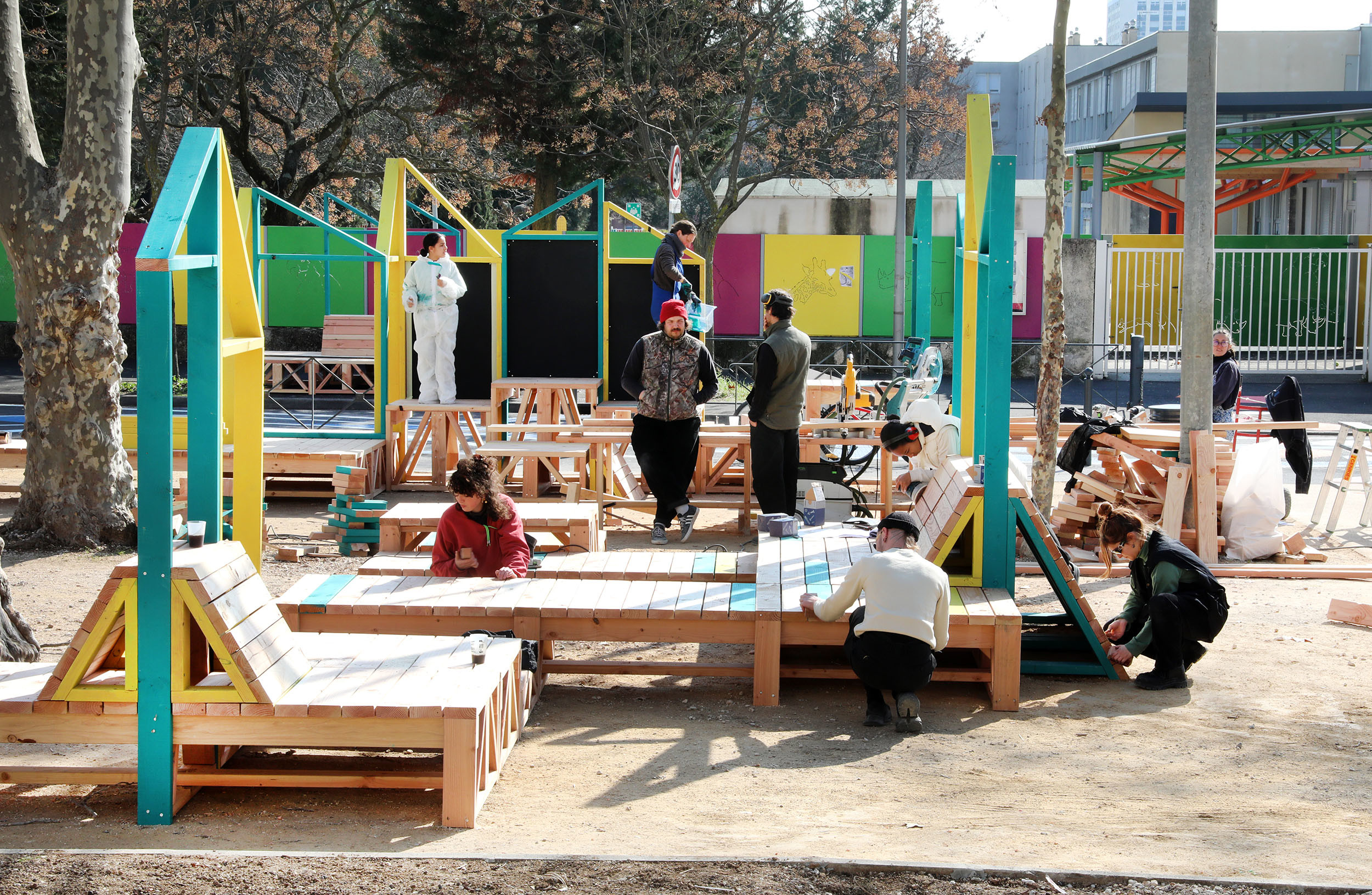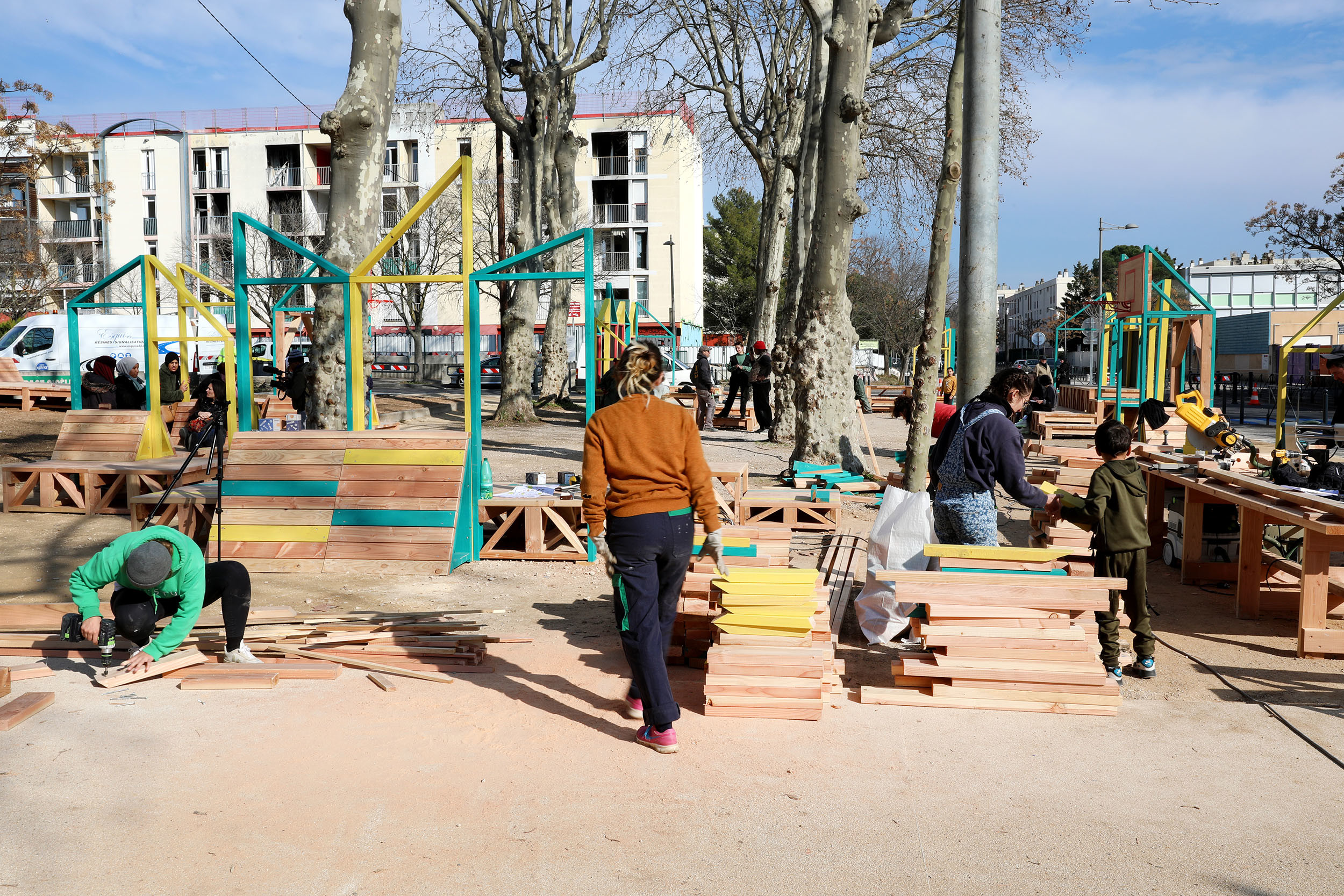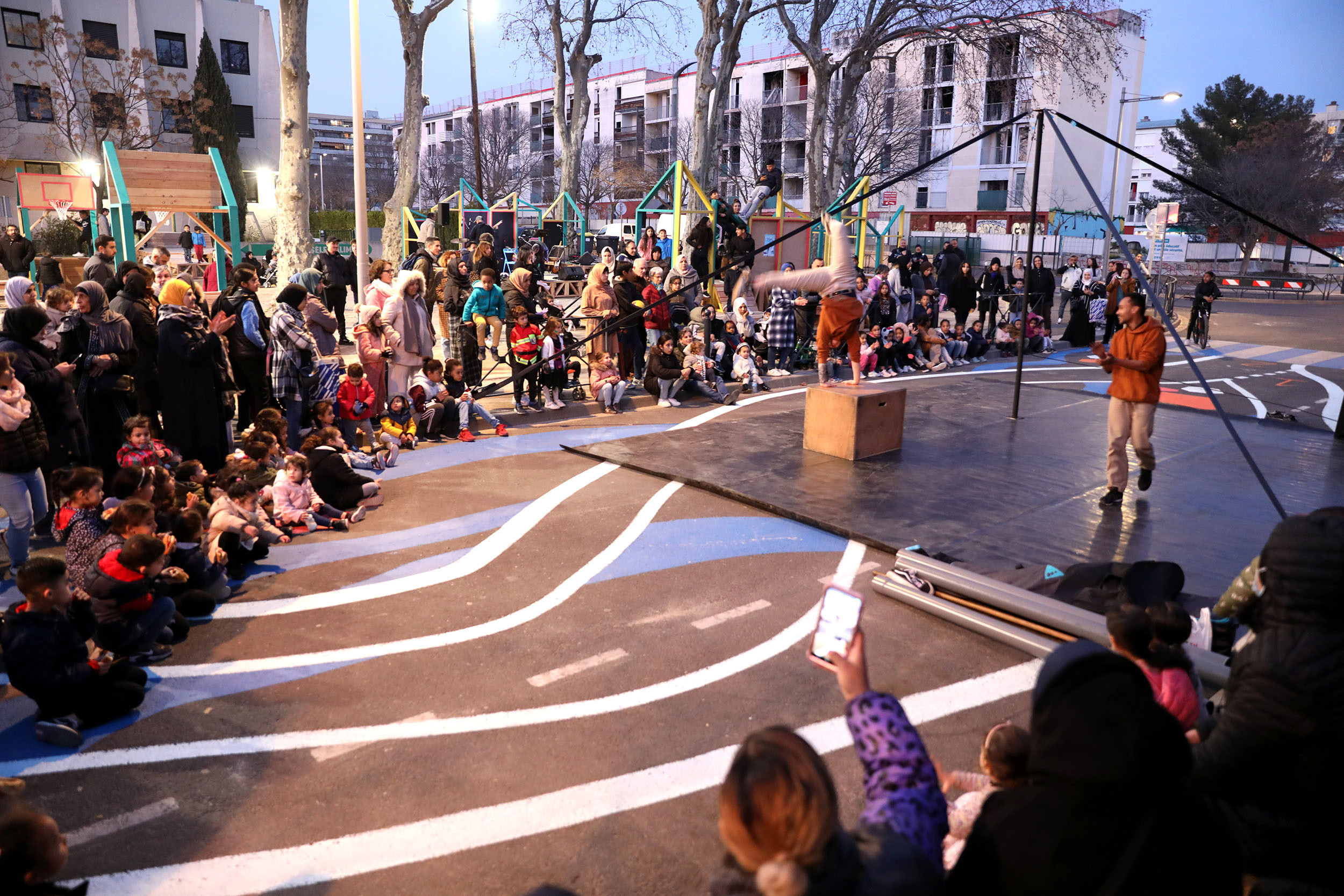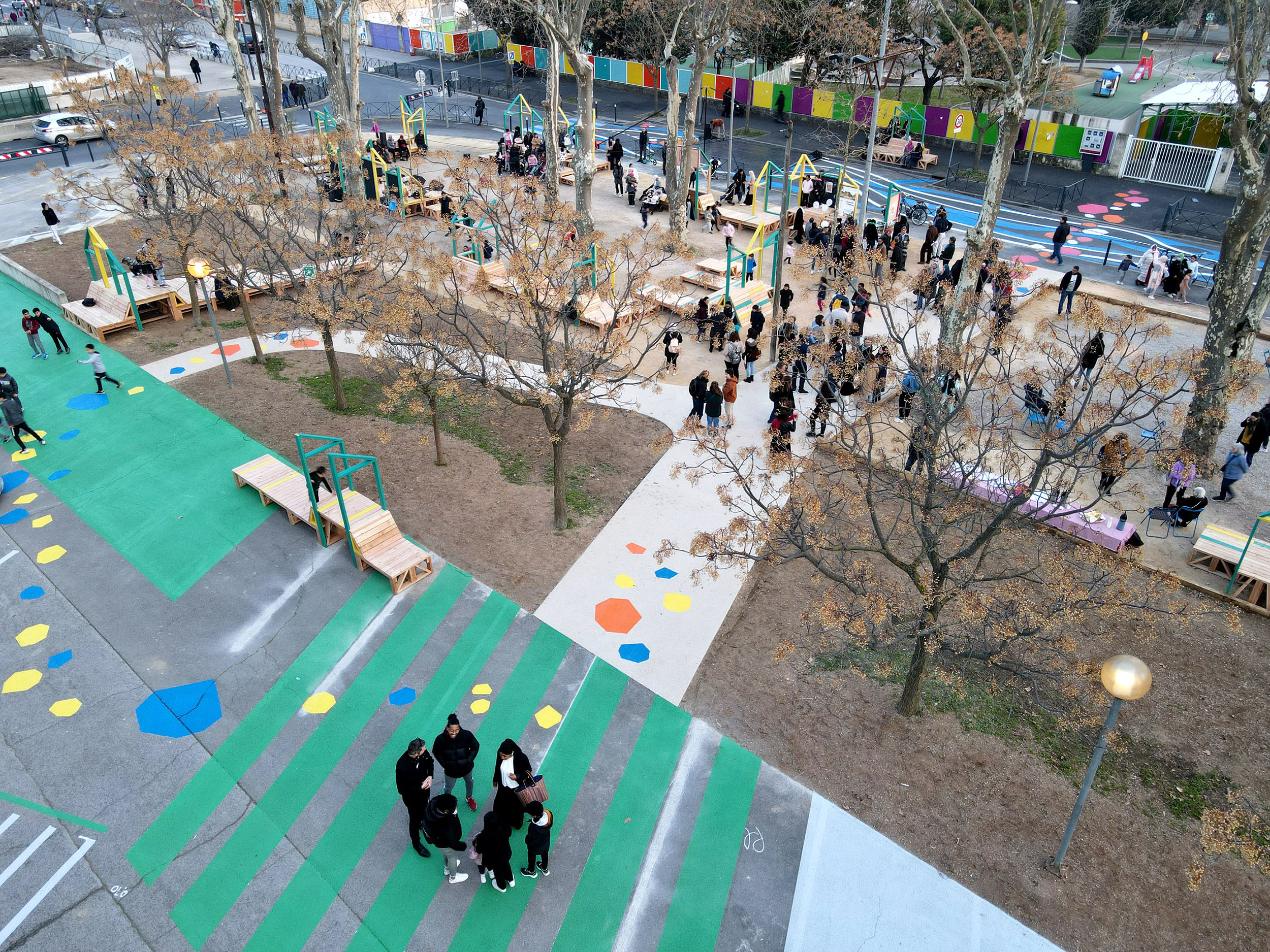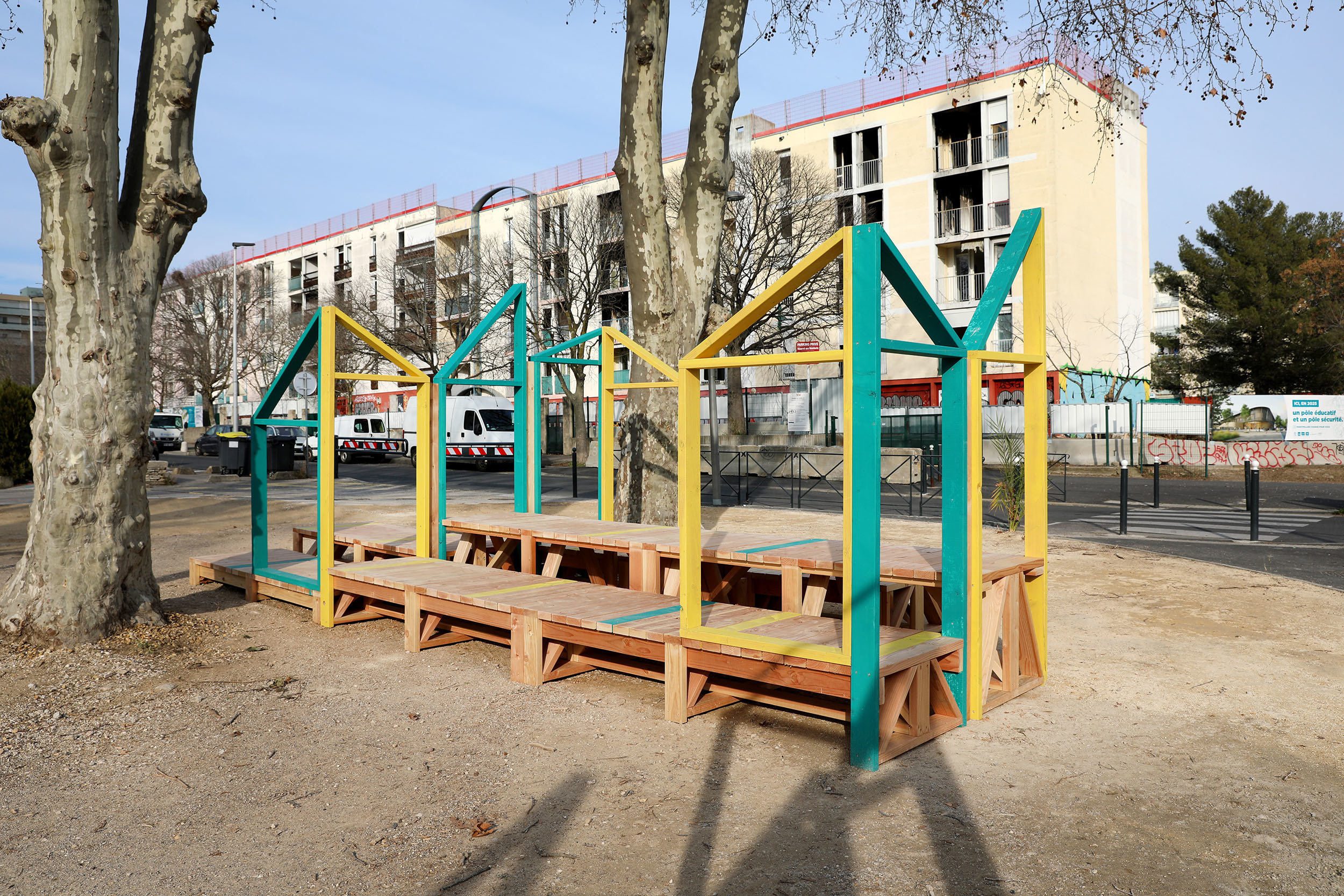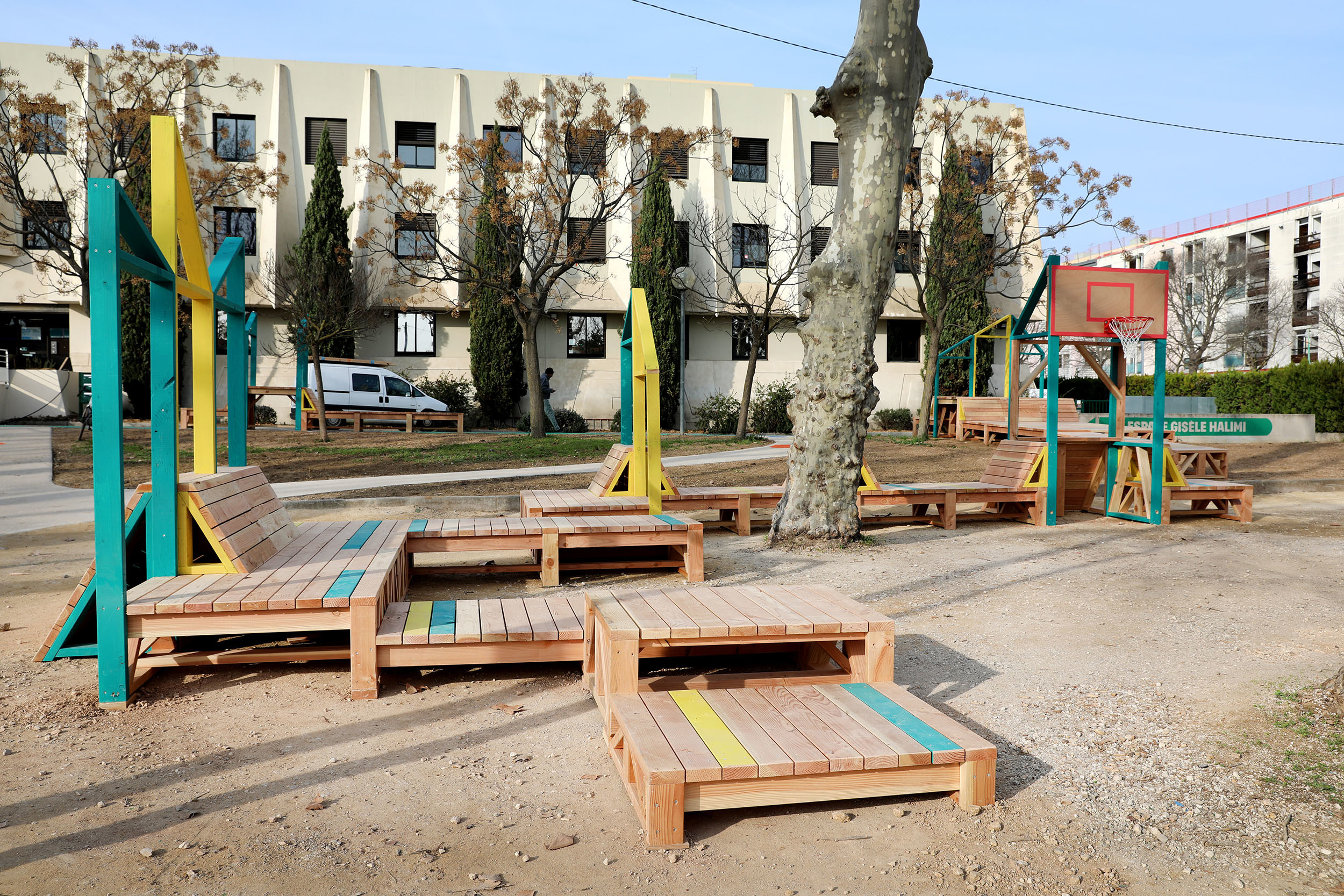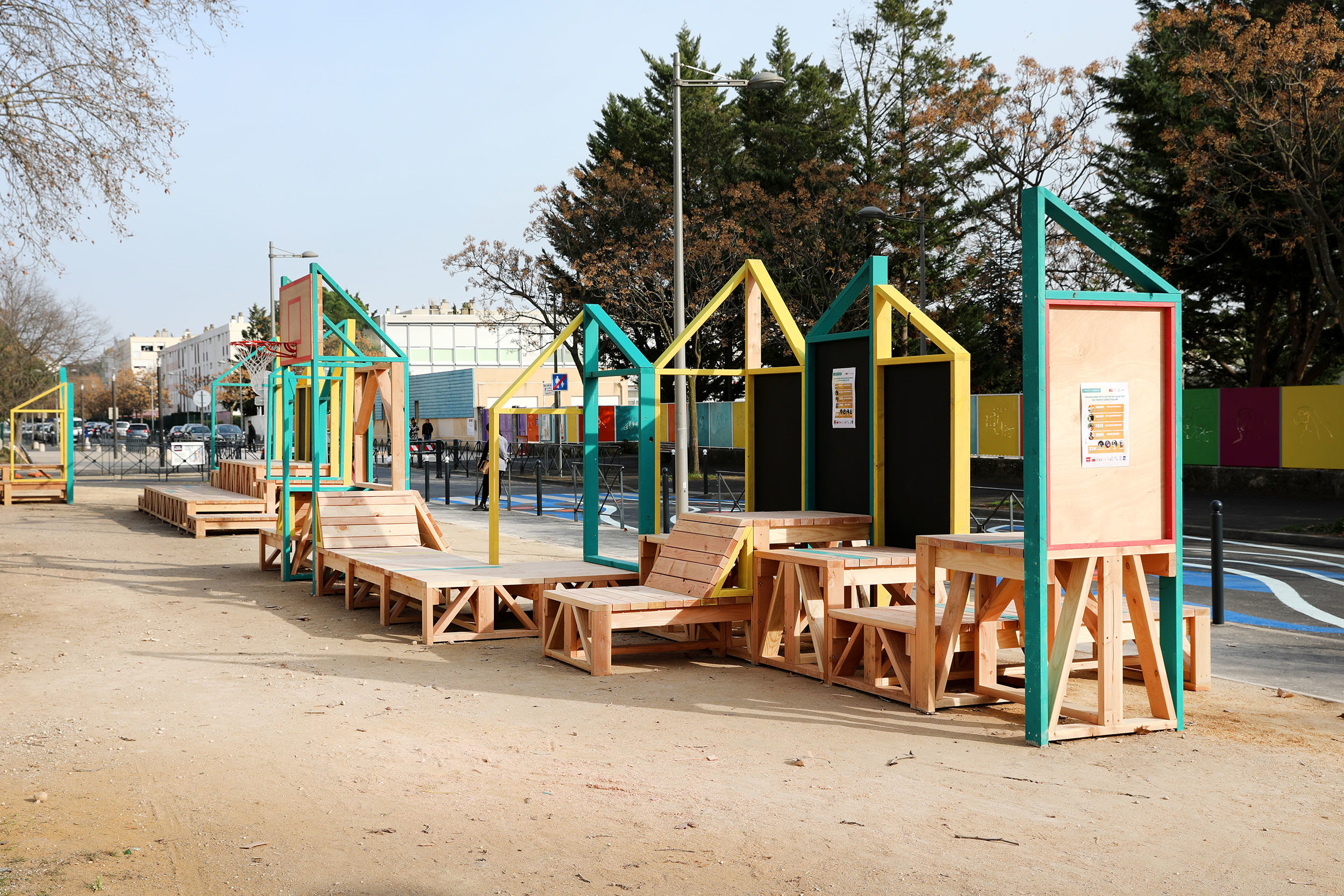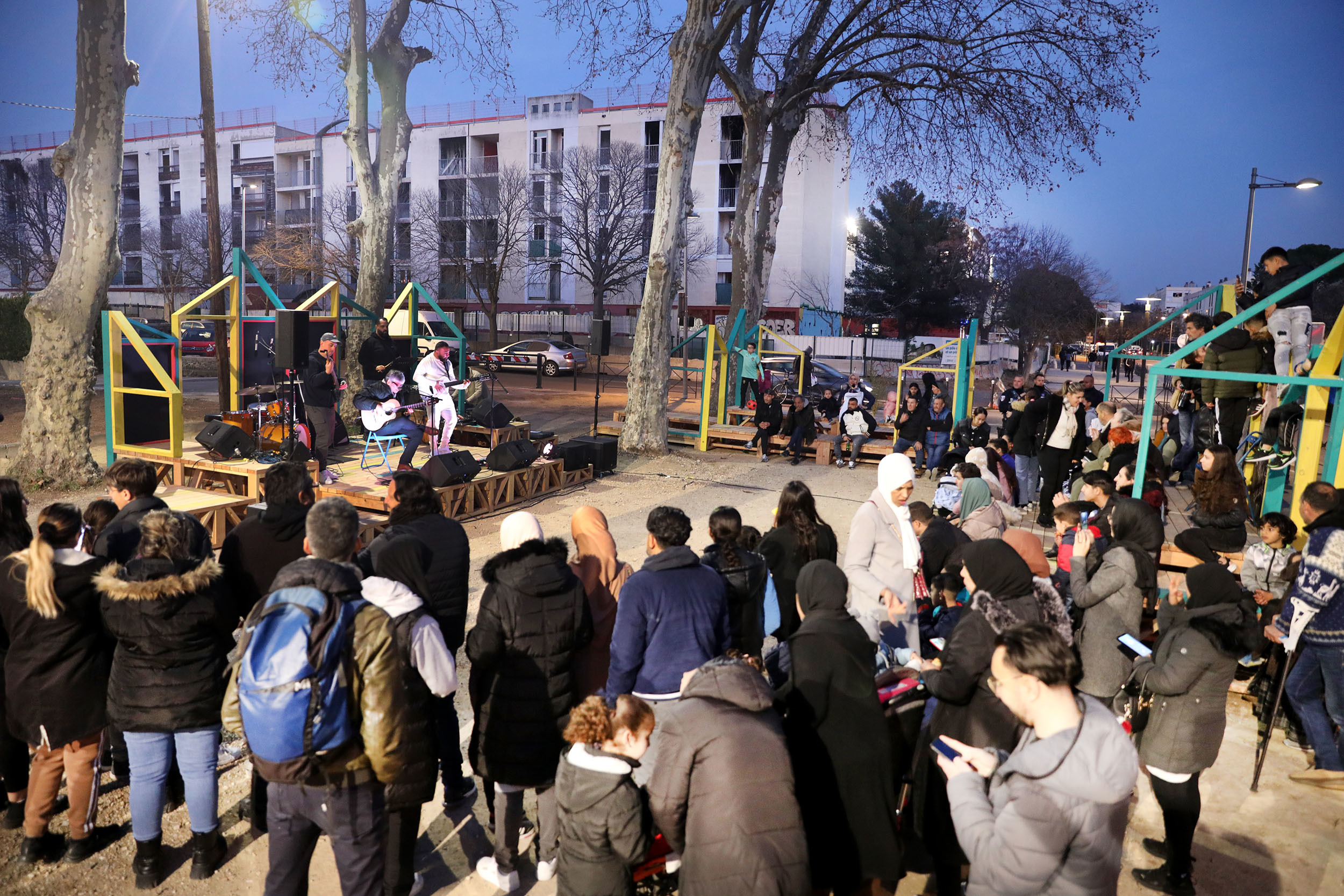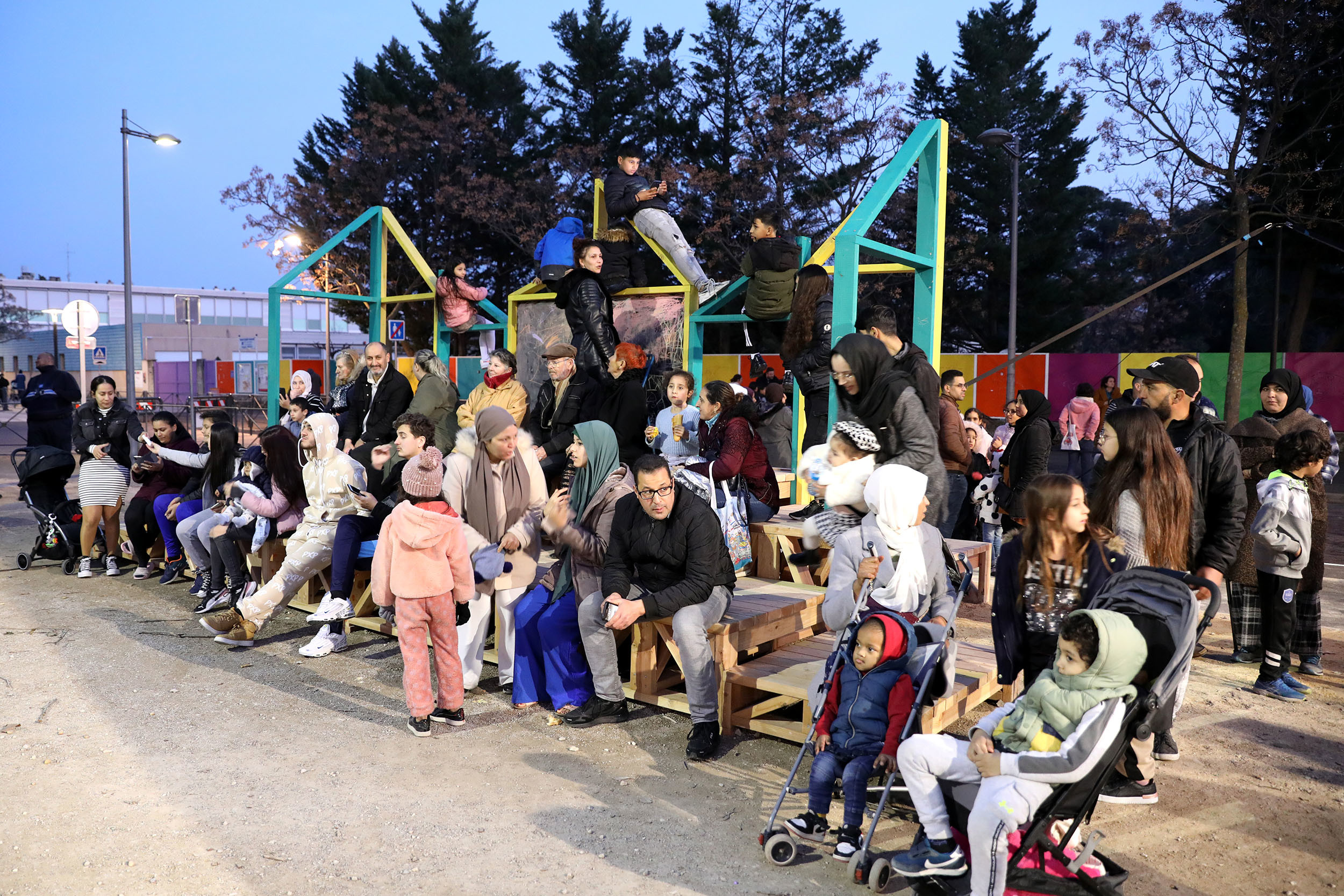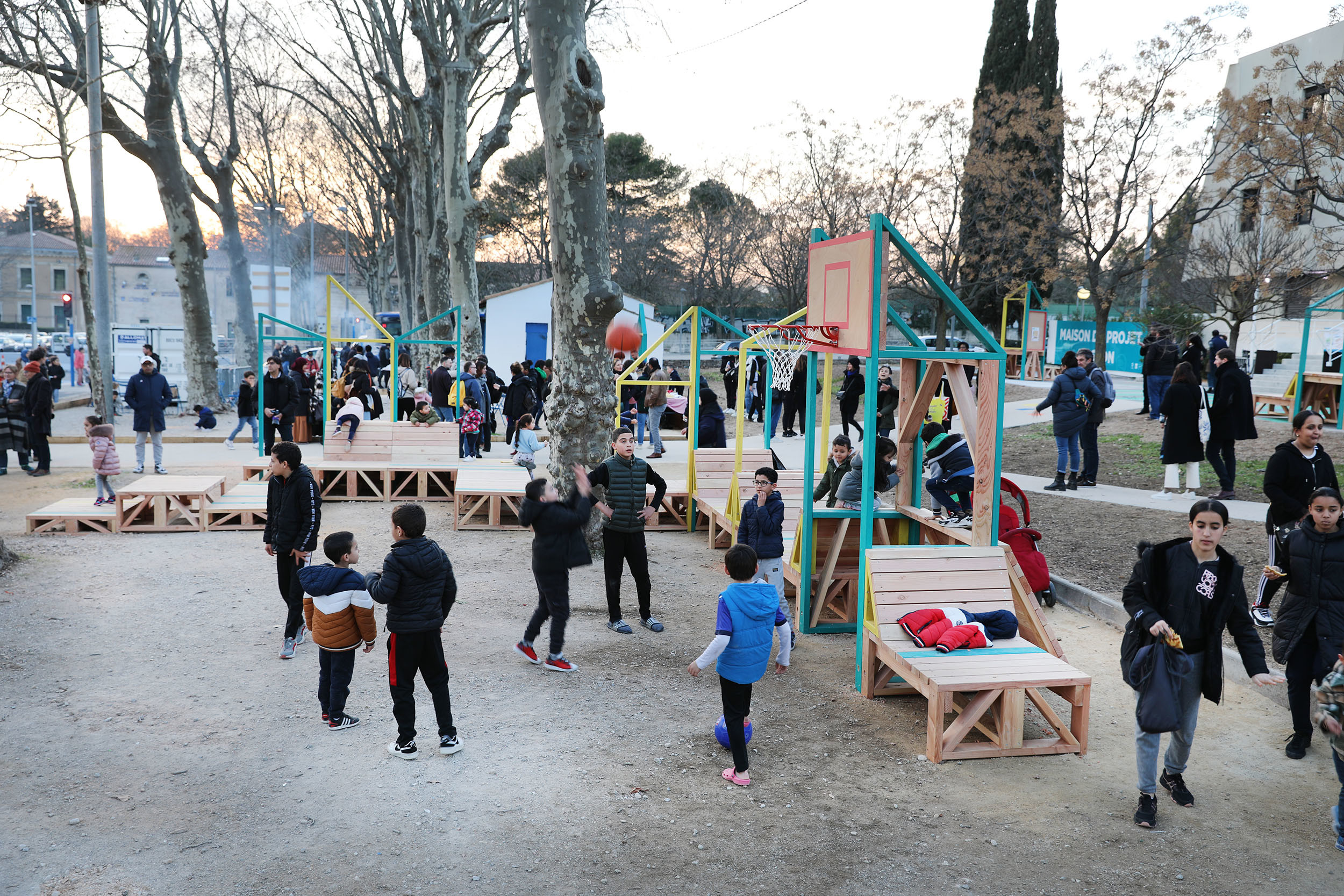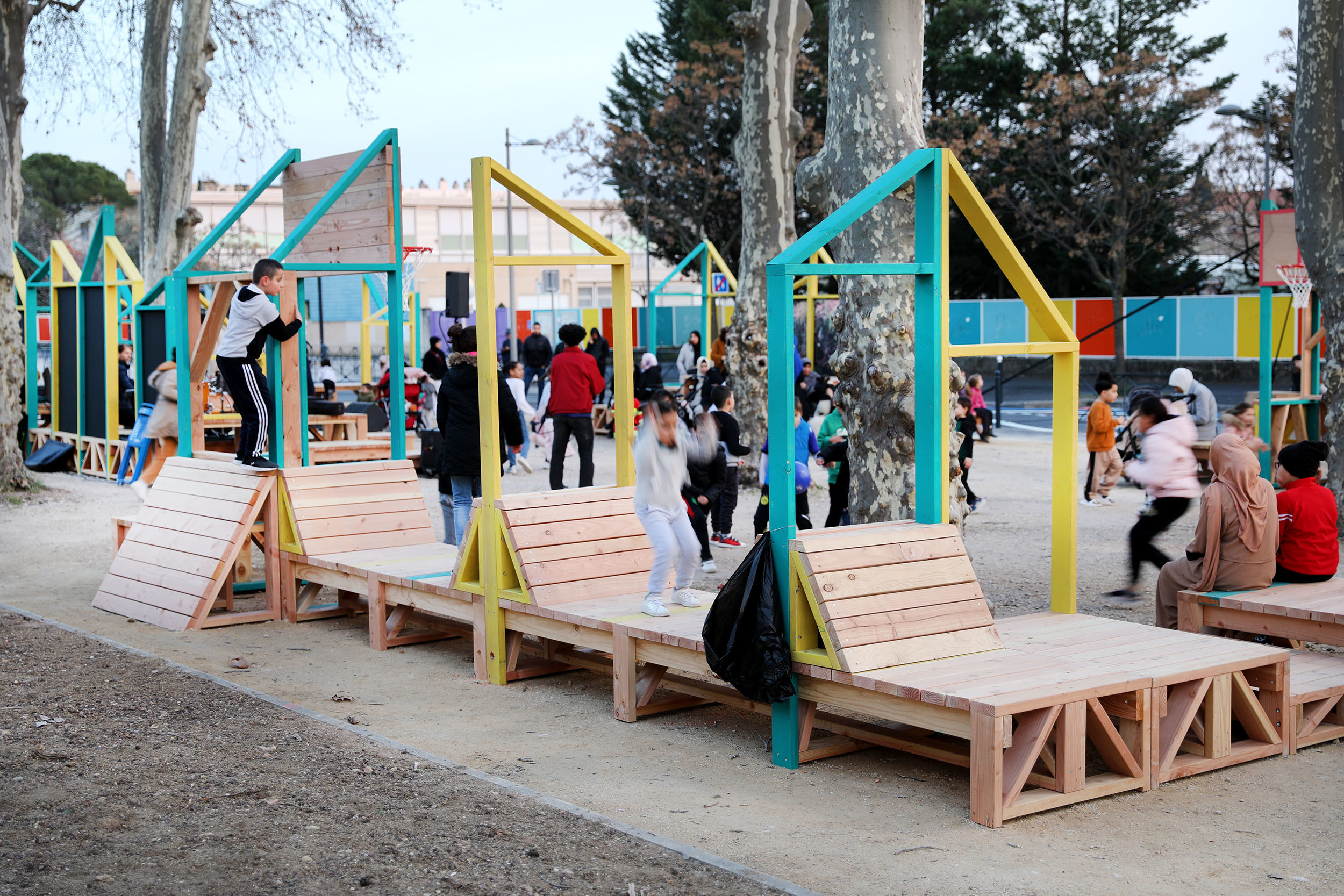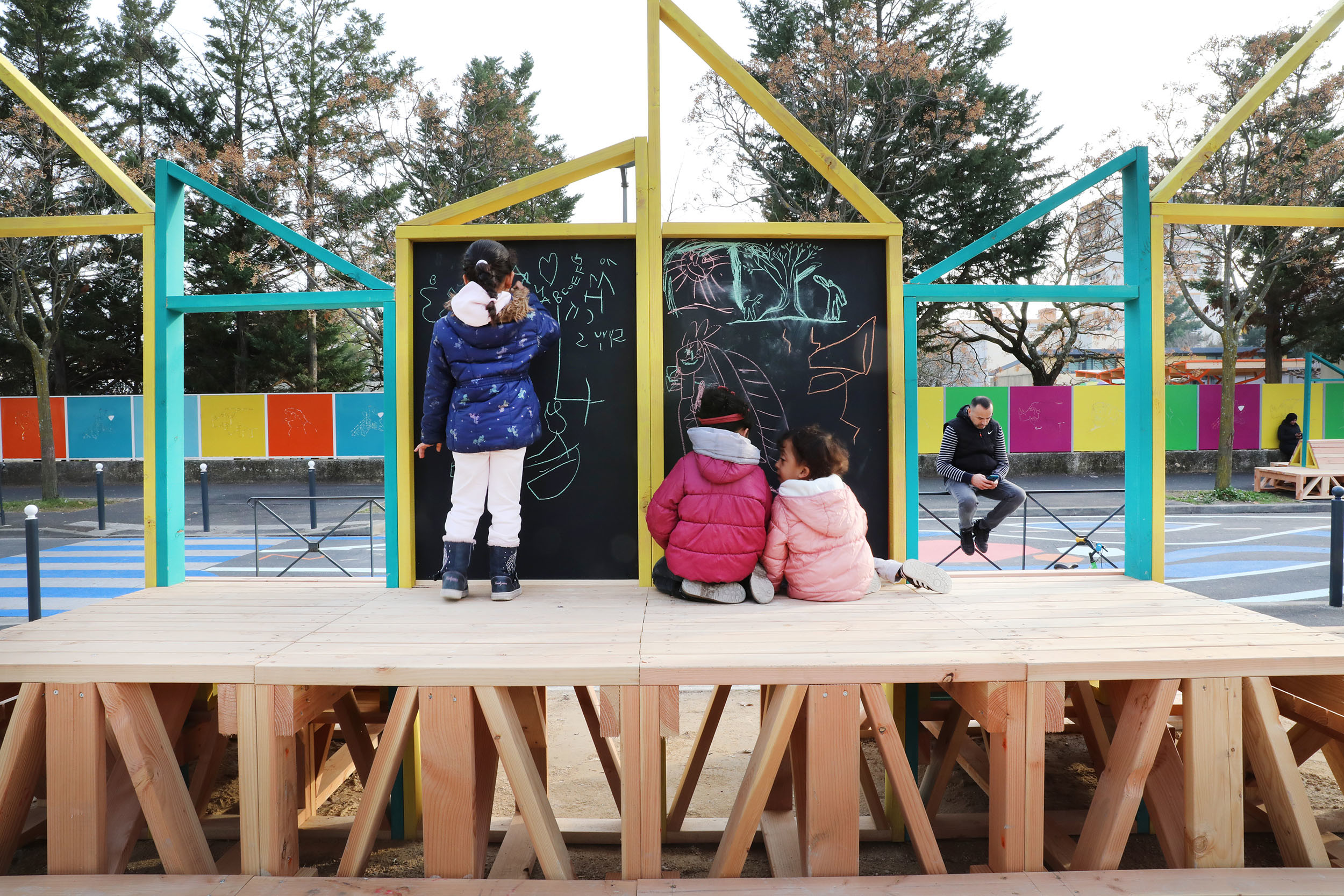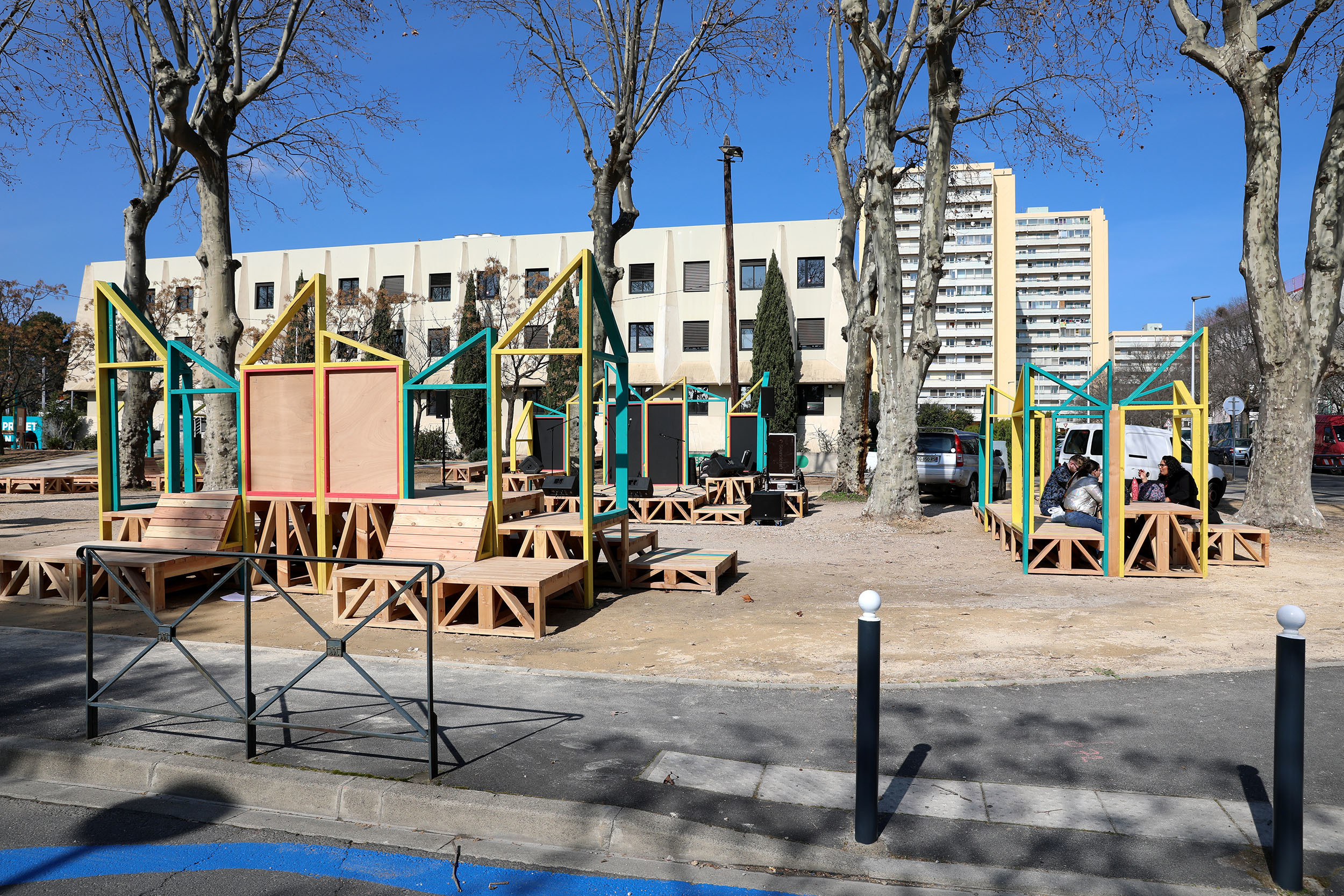
Février 2023
Gisèle Halimi’s square
Mosson(s) in transition
Montpellier
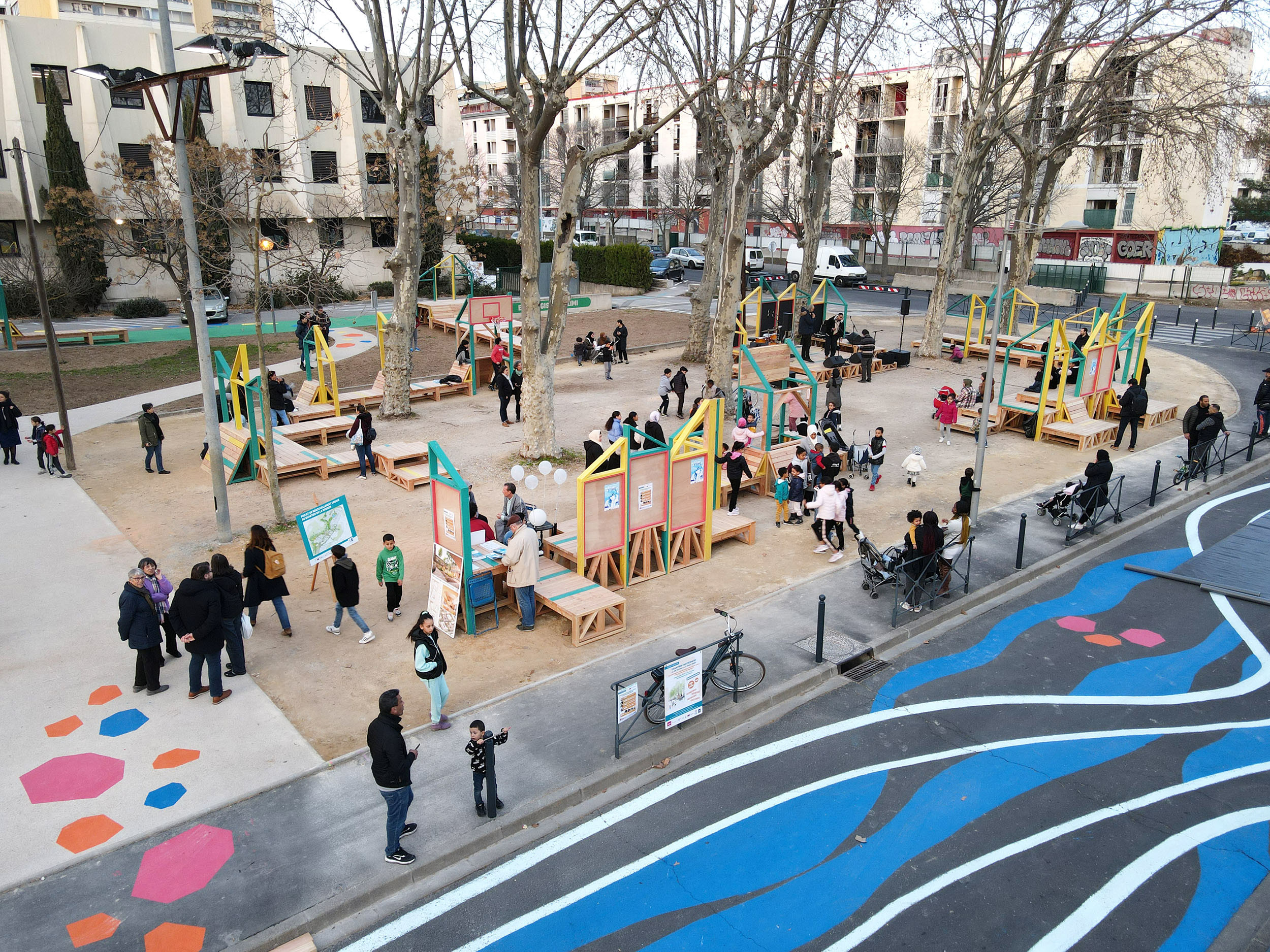
The transitional development of the Gisèle Halimi square provides a recreational and playful space, as well as a place to wait and relax for the neighborhood’s residents. This proposal responds to the theme “The city at the height of a child” and restores a place for play, inventiveness, motor skills and the appropriation of public space.
Conceived around a principle of modules, these modules are intended to be moved and rearranged between them within a few years, in other spaces of the district in order to test and prefigure new uses.
General context
In 2022, the SA3M and the city of Montpellier launched a call for tenders for the infrastructure works of VRD, landscaping of the roads and public spaces within the framework of the development of the Mosson concession. Bruit du frigo is responding alongside the Base landscape agency, which is the leader of the consortium that includes Coloco, Le Passe Muraille, Egis, Bld Waterdesign, Tribu and Quartiers lumières.
Bruit du frigo is in charge of :
– elaborating a global strategy of tactical urbanism, prefiguring uses and spaces in the years to come in connection with the temporalities of the project of transformation of the park and the Mosson district
– to carry out transitory installations, in participative building site as well as the installation of more artistic and event-driven actions
Starting the project
To start the project the contracting authority designates a public space to be created between the administrative building Gisèle Halimi and the James Joyce school.
The Gisèle Halimi building is a new place in the district with a project in full structuring. It is home to many actors in the neighborhood, the Mission Locale Jeunes, the CCAS, a Fablab, the citizen and neighborhood council, a culinary third place Shake Mama, the house of the urban renewal project of the Mosson-Cévennes sectors, the SA3M and the metropolis.
In the dynamics of the new project of Gisèle Halimi, restructuring its square and thinking it as a new public space is necessary in a logic of deployment. To increase the perimeter of intervention and secure this new public space, we decided to pedestrianize the rue de Bari. It separates the square from the building and the elementary school.
Project
We have seized the elements of consultation conducted by Passagers des villes in 2022, in order to meet the expectations of the inhabitants and users of the Gisèle Halimi building to have a recreational space, friendly, meeting, waiting, relaxation but also information.
We created a range of self-stable modules designed with a unique wood section. Vertical silhouettes punctuate these modules, becoming display and hanging supports, in addition to being an easily identifiable visual signal in the neighborhood.
This modular system makes it possible to compose a playful path and to propose different types of spaces with reversible uses: the stage is reversible into a picnic table and a terrace, the banquet table is also a bleacher, the stand for the bowling alley, a podium, an information kiosk, a platform, benches, a playful bench (allowing to offer a more “sporty” recreational area).
The whole is a playful course giving free rein to the inventiveness and motor skills of children. We invested the street Bari by realizing a big fresco of game on the ground whose graphic elements are spread out until the building Gisèle Halimi.
It is thus quite natural that this square regains its initial function of “square”, a real space of meeting, sharing and life, in the heart of the district.
The design of the square in front of the Gisèle Halimi building was built by the Bruit du frigo team during a participative construction site from 22/02/2023 to 03/03/2023 and inaugurated on 03/03/2023 with Passe Muraille in charge of the artistic program.
Last
projects
> all projectsAt the crossroads of art, territories and populations, our approach aims to promote the transition to sustainable, shared and welcoming cities, by proposing alternative ways of imagining and building our living environment and by exploring new forms of public space.


The Secret Balconies # 3 – The Pinède balcony
Montpellier

Common lands trail
Exhibition Nouvelles Saisons, arc en rêve centre d'architecture Bordeaux
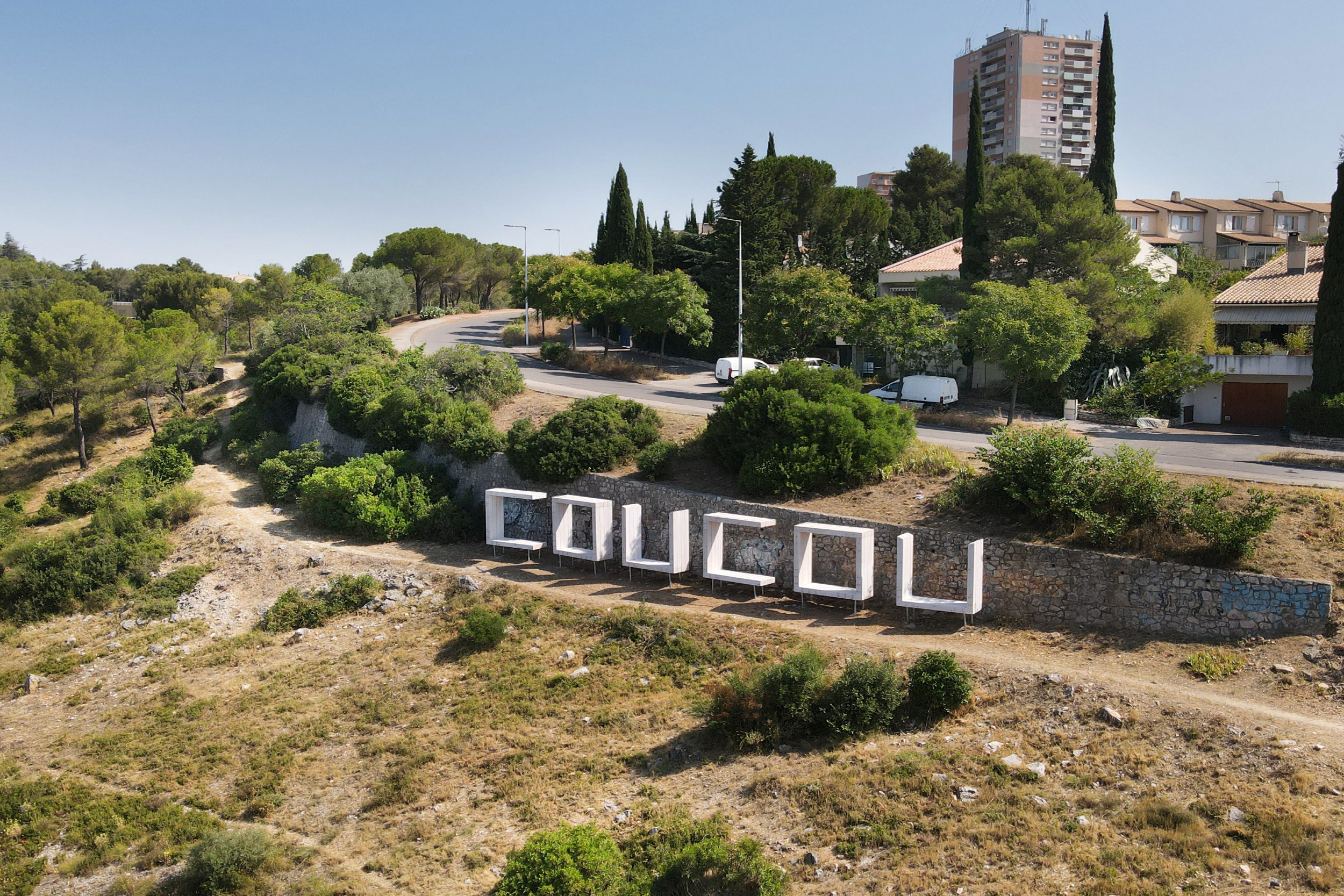
The Secret Balconies # 2 – Balcony des Hauts de Massane
Montpellier

The Secret Balconies # 1 – Balcony Larzac
Montpellier

The Portable Public Spaces
Lyon
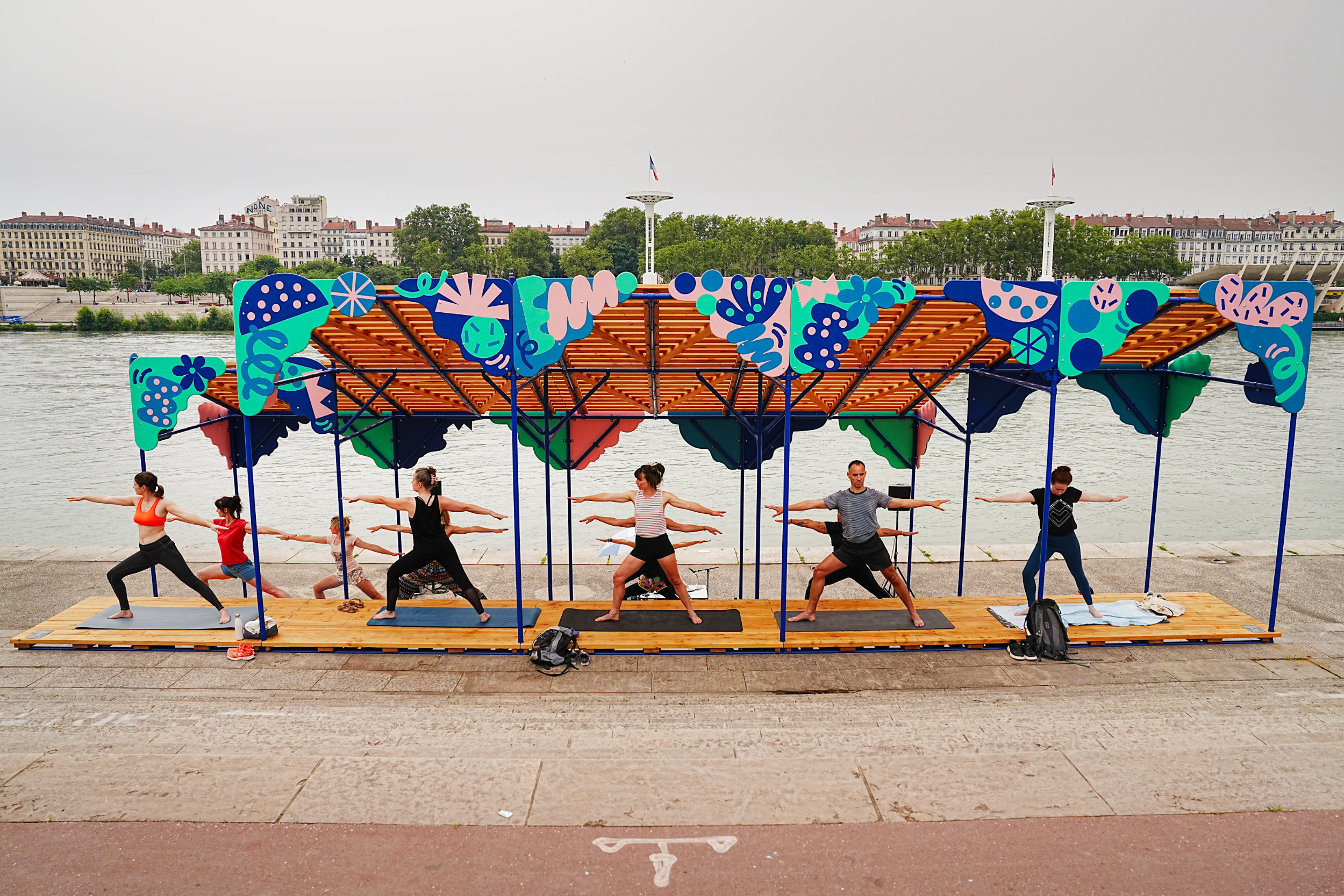
Modular shade canopy
Lyon



